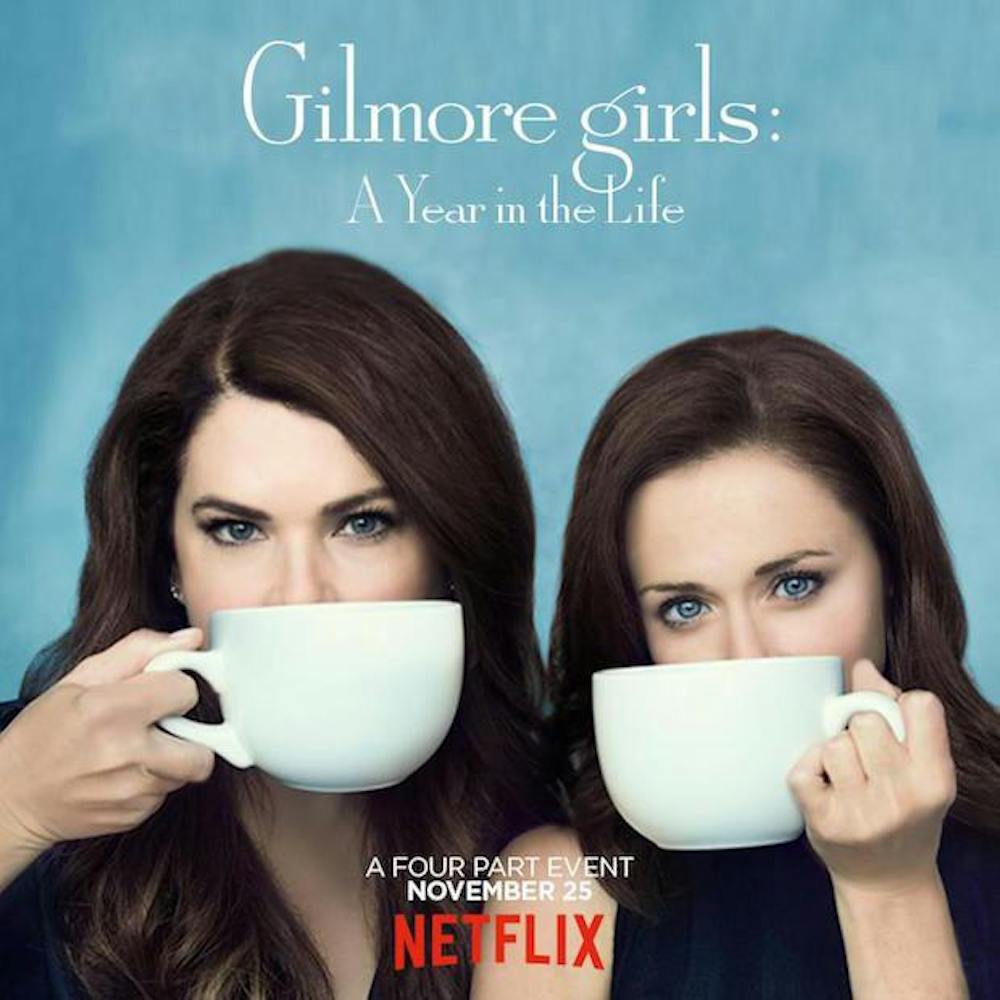WARNING: Major revival spoilers ahead!
“Mom” “Yeah?” “I’m Pregnant.”
Did your jaw drop like Lorelai’s did? Were your furious? Were you elated?
Who cares?
Gilmore Girls, a mother-daughter dramedy crafted by Amy
If plot drove this relationship-oriented
The overly-hyped “final four words” have never mattered all that much. They’re only a fraction of an answer to the pivotal question anyone asks in assessing a television revival: Was it worth it?
The answer, with or without the final four words, is yes.
The Gilmore revival was ambitious as it turned away from the obnoxious pit of nostalgia revivals like Fuller House fell into. Rather, the four extended episodes had tasks they intended to complete, questions they intended to answer.
Ultimately, the Palladinos accomplished valuable character growth, and yes, closure.
From shallow waters, most regard Gilmore as a kitschy ode to a mother-daughter/best friend duo, small towns, coffee and pop tarts. It’s beautiful nonsense, filling escapism.
But with a deeper look, Palladino crafted a show about deeply flawed generations of women, all grasping for ways to relate to each other.
Lorelai (Lauren Graham), Rory (Alexis Bledel) and Emily (Kelly Bishop) toy with the entitlement that swirls around the ping pong game of emotional development existing within all of the show’s seven (now eight) seasons.
Lorelai and Rory mix messy relatability with unattainable privilege in a way that’s comforting at first glance, but frustrating in the long haul.
Is Rory the prodigy that her grandparents laud her for being? Is Queen Lorelai worthy of the crown Stars Hollow has bequeathed her? Is Emily really the Wicked Witch of the West or do her shrill words bring a
These are questions that the show toyed with in the last decade yet never came around to answering. But the revival brought a frank and unimpeded take on the state of Gilmore entitlement.
Rory, at 32 years old, has three phones, no real job, no home address and no underwear. Though still, she flies back and forth from London multiple times, scoffs at the “30-something club” and shows up unprepared for job interviews.
There’s something bitterly rewarding about Rory in her thirties. She’s a formulaic result of the pedestal she’s been teetering on for most of her life, reluctant to jump off even when her decisions are all but perfect. Remember when she stole a yacht?
She’s lived a sheltered, entitled life, in which her darker moments that could have produced an awakening were swept under the rug in joyful reunions with Lorelai.
Sure, it’s the kinder, more idealistic ending to leave Rory on the verge of a long and successful journalism career, as she seemed to be in season seven. But leaving Rory broke and floundering makes more sense. And despite the dreamy ‘la la’s’ in each scene, Gilmore Girls isn’t as idealistic as it seems.
Meanwhile, Emily finds happiness in Richard’s absence — which was felt — that perhaps she wasn’t able to find in his presence. She throws on a pair of Keds and becomes innately herself in a way we’ve all been hoping she would.
The awful 20-minute long Stars Hollow Musical in “Summer” could have dragged on for another 30 minutes and Emily’s scenes would have still made the revival worth it.
On the other hand, Lorelai’s character growth wasn’t lacking, but it didn’t feel quite as earned.
Lorelai’s arc largely felt like useless plot revolving towards one end goal: the wedding. But what was striking, and what allowed Lauren Graham to flourish in her emotional range was grief. Once again revealing that through her childish exterior, Lorelai has always harbored internal stability and strength.
She’s essentially her
There was something oddly satisfying about the full circle effect created in the final scenes of “Fall.” But real closure in “A Year in the Life” came through in characters, not plot.
Through years of convoluted narratives and buoyant character development, the revival brings a more stable sense of who these women are.
And while “No Cellphone” signs and coffee mugs are comforting forms of nostalgia, watching Lorelai and Emily at emotional peaks (it’s time for Kelly Bishop and Lauren Graham to get some Emmy love) storming through Emily’s kitchen in a heated argument felt more like home than anything else.









